Our planet is facing an ecological challenge that can endanger the survival of mankind. While the game is on it is not yet over. YOU can make a difference!
In his book ‘The Life of the Bee’, scientist Maurice Maeterlinck said “If the bee disappeared off the surface of the globe, then man would have only four years of life left.” When the quote was falsely attributed to Albert Einstein, it was expanded to say “No more bees, no more pollination, no more plants, no more animals, no more man.”
The Act of Pollination
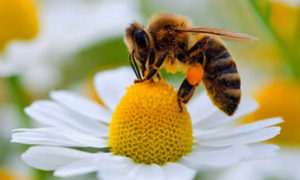 The ecosystem of our planet is dependent upon pollinators. Almost 75% of flowering plant life survives by having creatures such as bees, bats, birds or butterflies carry pollen from one plant to the next, thus fertilizing for reproduction and ensuring genetic diversity. About one-third of the world food cultivation depends on pollinators, including most fruits, vegetables, nuts and edible seeds. The foods that require pollination are also the highest in nutritional value. As a result, areas that experience low levels of pollinators may still produce food however people face malnutrition even though they feel full.
The ecosystem of our planet is dependent upon pollinators. Almost 75% of flowering plant life survives by having creatures such as bees, bats, birds or butterflies carry pollen from one plant to the next, thus fertilizing for reproduction and ensuring genetic diversity. About one-third of the world food cultivation depends on pollinators, including most fruits, vegetables, nuts and edible seeds. The foods that require pollination are also the highest in nutritional value. As a result, areas that experience low levels of pollinators may still produce food however people face malnutrition even though they feel full.
A typical bee spends many hours every day collecting nectar and pollen. A single bee can visit up to 5,000 flowers in one day. Flying from plant to plant, the bee deposits while it collects, thus enacting pollination. For the bee, this is simply a side effect of their prime goals.
Nectar is collected to consume for energy; surplus is stored as honey for later consumption. Pollen is collected due to its high protein content and is used as food primarily to feed the young larvae. In the perfect order of nature, the requirement of the bee to collect pollen and nectar also results in the survival of a large portion of plant life.
Decline of the Pollinators
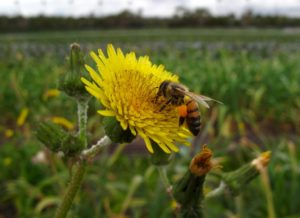 In the past decade we have seen dramatic decreases in bee populations around the world. What was at first called ‘colony collapse disorder’ has now become an annual event for beekeepers who lose a portion of their hives every year.
In the past decade we have seen dramatic decreases in bee populations around the world. What was at first called ‘colony collapse disorder’ has now become an annual event for beekeepers who lose a portion of their hives every year.
There are more than 20,000 species of bees in the world. Since honeybees create consumable honey and wax, they are raised commercially. Some other species of bees are raised commercially and hired out as portable pollination hives to farmers. These commercial operations only account for a small portion of pollination in our ecosystem. The rest is handled by many other wild species of bee which are responsible for the pollination of plant life, both domestic and wild.
All of these bees are endangered due to a variety of factors, including human usage of pesticides, reduction of resources due to urban growth, the spread of invasive plant species that do not provide pollen, and the onset of diseases likely supported by a harmful environment.
The Human Solution
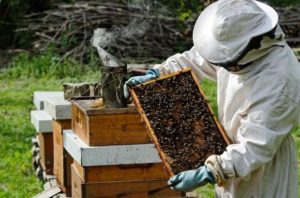 Political action is taking place around the world to enhance the environment for bees. The particular target is the banning of neonicotinoids, a pesticide developed by Shell Oil and Bayer in 1980s and 1990s. Used to reduce the impact of insects on crops, the poison is suspected to be a major component in the decrease of bee populations and may be directly related to the increase of colony collapse disorder.
Political action is taking place around the world to enhance the environment for bees. The particular target is the banning of neonicotinoids, a pesticide developed by Shell Oil and Bayer in 1980s and 1990s. Used to reduce the impact of insects on crops, the poison is suspected to be a major component in the decrease of bee populations and may be directly related to the increase of colony collapse disorder.
Many European countries have banned the use of this chemical. Other countries have been slow to ban the product because it would also mean a likely decrease in crop yield. In today’s society, the needs of the economy often outweigh the needs of the ecosystem.
The art of bee-keeping is becoming more popular. People are setting up one, two or several hives on their properties, both increasing plant yield and providing wax and honey. Hobby hivists are increasing the population of honeybees primarily for their effect on crop yields and the harvesting of honey and wax. The amount of effort required to maintain a healthy hive is less than required to keep an aquarium. As more people raise and cultivate bees, the impact on the ecosystem is positive as well.
Flowers 4 Bees
 So what can YOU do to make a difference? The two things that bees require to survive are pollen and nectar. While obviously much of this is harvested from natural plant life, we can make it easier for them. By planting flowers in both urban and rural locations, we can provide for the bees beyond what is currently available. The diminishing bee population results from imbalances in our eco-system. If we shift the balance the other way and create an abundance of food for bees, the challenges faced by bees and other pollinators could be overcome.
So what can YOU do to make a difference? The two things that bees require to survive are pollen and nectar. While obviously much of this is harvested from natural plant life, we can make it easier for them. By planting flowers in both urban and rural locations, we can provide for the bees beyond what is currently available. The diminishing bee population results from imbalances in our eco-system. If we shift the balance the other way and create an abundance of food for bees, the challenges faced by bees and other pollinators could be overcome.
To help promote this affirmative action I am creating a new hash tag #flowers4bees
This year I will specifically plant flowers to help the bees. By providing a source for their harvesting of pollen and nectar, the bees will likely grow stronger. In addition to any beauty added to the scenery, planting flowers can make a difference to our ecosystem. Imagine if everyone planted some flowers this year? We can begin an upward spiral that changes the world.
My objective is to create a garden that meets the following objectives (in order of importance):
1. Attract and provide for bees, butterflies and hummingbirds.
2. Minimal cost and effort to plant.
3. Grows effectively with minimal upkeep or maintenance.
4. Extended season (spring to fall bloom coverage).
5. Will grow again next year (Perennial).
6. Attractive colors.
7. Potential produce collection.
It is also necessary to consider where you live. It is better for the ecosystem if you choose plants that are native to your growing area. These plants will also thrive better than plants intended for growth in a different climate. A little bit of research can help you decide what to grow.
My region (Canada north of the Great Lakes) is growing zone 5 which is hot in summer and cold in winter. Certain plants thrive in this environment. Your location will have influence on what you choose to grow.
There are countless choices that could be made, however it is important to also simplify the task.
Here are my choices for this year:
Purple Coneflowers (Echinacea)
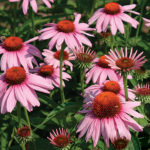 Known for its use to make herbal tea and healing potions, the Purple Coneflower is also an attractive plant that grows tall and purple. It does require some maintenance at the beginning; after that the patch should expand and grow every year. Help the bees all season long then harvest at the end to help yourself over the winter. In my garden will be one large patch of just this flower.
Known for its use to make herbal tea and healing potions, the Purple Coneflower is also an attractive plant that grows tall and purple. It does require some maintenance at the beginning; after that the patch should expand and grow every year. Help the bees all season long then harvest at the end to help yourself over the winter. In my garden will be one large patch of just this flower.
Sunflowers
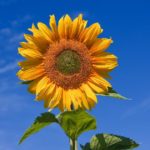 Sunflowers are an annual plant; however there is also a harvest at the end of the season. They also look awesome. There are different varieties, I will choose the one that has pollen and edible seeds. There may be an issue with birds and squirrels eating the seeds, but that helps the ecosystem as well. Sunflowers require some room to grow so I will create a couple of rows to plant them in.
Sunflowers are an annual plant; however there is also a harvest at the end of the season. They also look awesome. There are different varieties, I will choose the one that has pollen and edible seeds. There may be an issue with birds and squirrels eating the seeds, but that helps the ecosystem as well. Sunflowers require some room to grow so I will create a couple of rows to plant them in.
Black-Eyed Susans
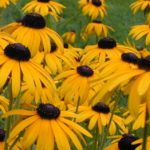 These flowers grow tall, pretty and look great in bunches. Bees love their bright yellow flower. Since they are a wildflower they will flourish without maintenance. They grow best in groups rather than mixed with other flowers. This is perfect for bees that will more easily find and harvest your crop. Black-Eyed Susans also have a long blooming season, often from June to October. There are several varieties of these flowers to choose from; I will choose yellow and red flowers for two patches.
These flowers grow tall, pretty and look great in bunches. Bees love their bright yellow flower. Since they are a wildflower they will flourish without maintenance. They grow best in groups rather than mixed with other flowers. This is perfect for bees that will more easily find and harvest your crop. Black-Eyed Susans also have a long blooming season, often from June to October. There are several varieties of these flowers to choose from; I will choose yellow and red flowers for two patches.
Dandelions
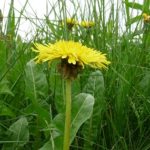 Few people grow dandelions on purpose. These plants thrive through the most difficult conditions, including growing through asphalt. Dandelions also bloom very early in the spring, providing a quick source of nourishment for bees. Instead of battling this natural survivor, just let them grow. Save the effort of weeding and refuse to introduce the toxins from pesticides. Just let them grow. If you wish you can harvest the dandelions to make a potent decongestant tea which is high in calcium and lowers blood sugar.
Few people grow dandelions on purpose. These plants thrive through the most difficult conditions, including growing through asphalt. Dandelions also bloom very early in the spring, providing a quick source of nourishment for bees. Instead of battling this natural survivor, just let them grow. Save the effort of weeding and refuse to introduce the toxins from pesticides. Just let them grow. If you wish you can harvest the dandelions to make a potent decongestant tea which is high in calcium and lowers blood sugar.
Call to Action
If you have read this far, you know that the cause is worthy and you can make a difference. Plant some flowers this year to help the bees and you will also see birds and butterflies. If you don’t have a garden, find some unused land and spread some seeds. Enjoy creating beauty and know that your efforts also help your planet thrive. It really is quite simple.
©Copyright 2016 Glenn Stewart Coles
Here is where I buy my seeds
Johnny’s Selected Seeds
Free e-book: The Life of the Bee by Maurice Maeterlinck
The Life of the Bee
The Beauty of Pollination

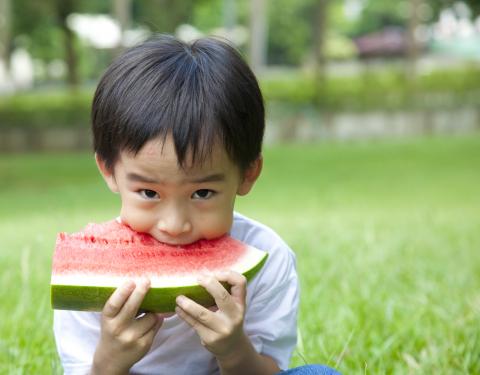
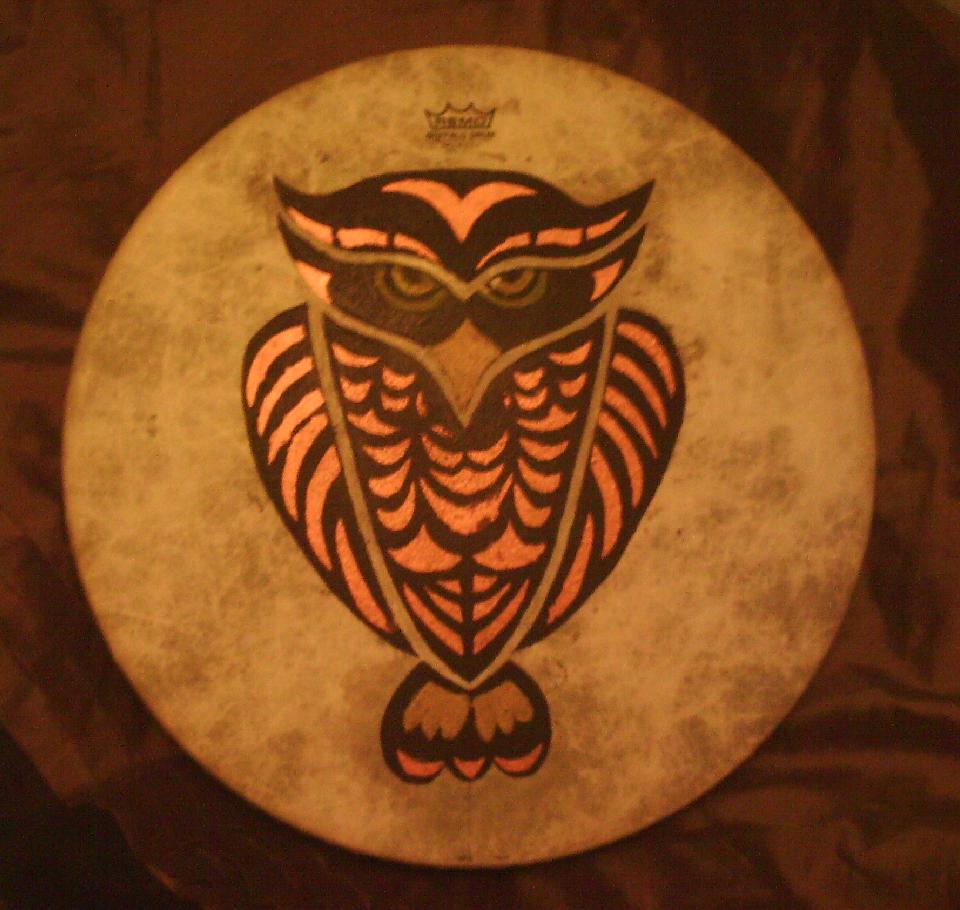

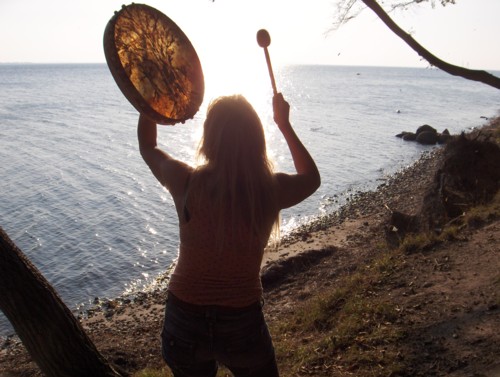


i want to help and plant a million flowers and start a fundraiser and plant flowers around the country